Everyone wants and dreams of a perfect, lush lawn. But how to achieve that, especially when planting grass seeds?
In most climates, the best time to plant grass seeds is autumn. The soil is still warm from the summer and will encourage optimum root growth. You can also sow grass seed at the end of winter so maximum growth through spring and summer is achieved.
In this blog post, I will guide you through the process of planting grass seeds and discuss everything you need to know on this subject.
What we cover
ToggleGrass Seed Types and Their Ideal Planting Times
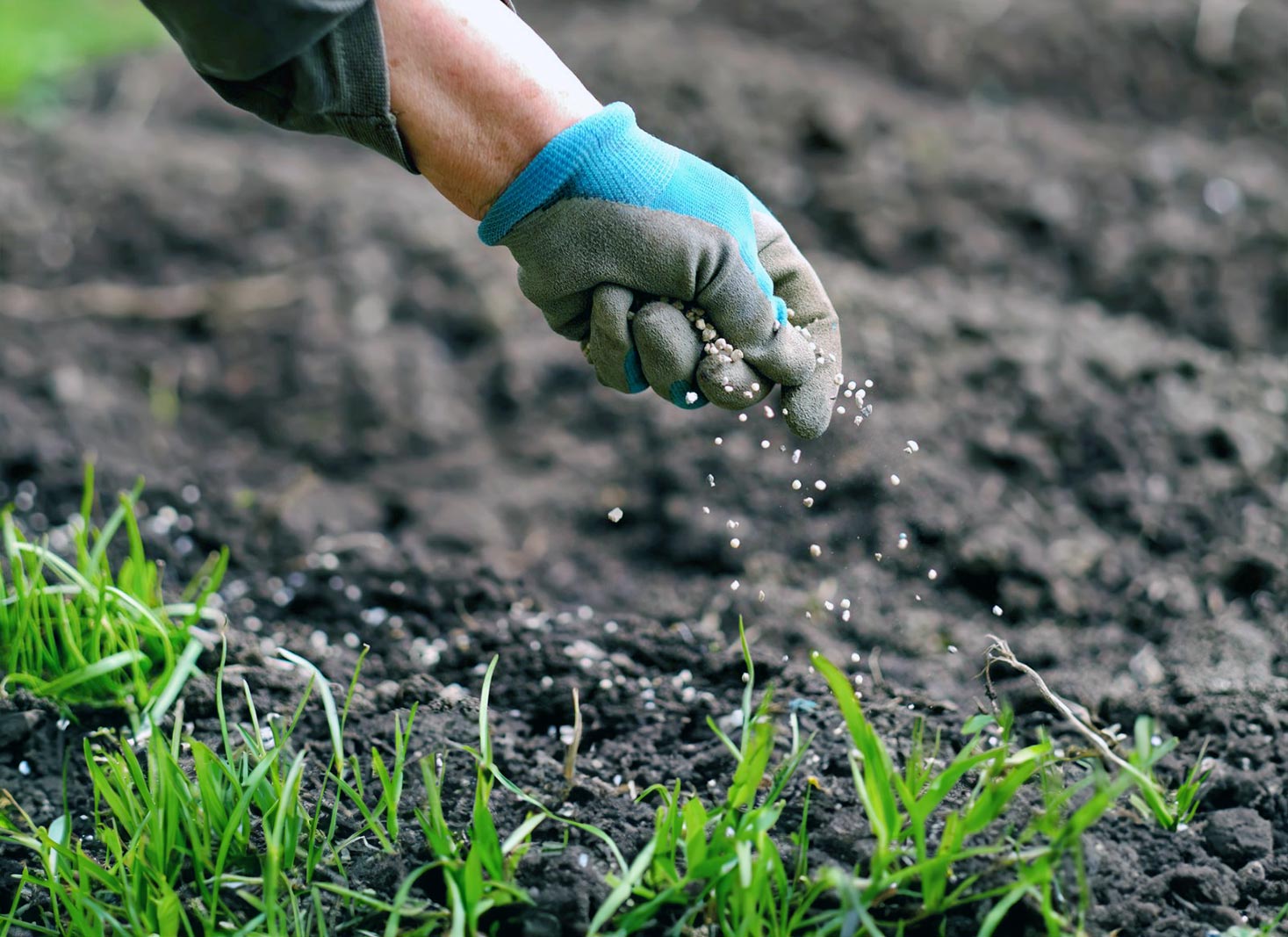
Selecting the most suitable grass seed for your region is essential for successful planting, as different grass types thrive in specific climates and require distinct planting times.
Cool-season grasses, such as Kentucky bluegrass, tall fescue, and perennial ryegrass, are best suited for colder regions, while warm-season grasses like Bermuda grass, centipede grass, and zoysia grass flourish in warmer areas.
Cool-Season Grasses
Cool-season grasses, including Kentucky bluegrass, tall fescue, and perennial ryegrass, are perfect for the Midwest and far north regions. These grasses perform well in cooler temperatures and should ideally be planted in late summer or early fall when soil temperatures range between 50-65°F (10-18°C).
Planting cool-season grasses during this time provides the opportunity to become established before winter sets in, ensuring a healthy and vibrant lawn when spring comes. Planting in early spring is also possible, but it may present increased risks as the plants may not have sufficient time to mature before summer stress sets in.
Warm-Season Grasses
Warm-season grasses, such as Bermuda grass, centipede grass, and zoysia grass, are ideal for the southern region, where summers are warm and winters are mild. These grasses thrive in warm soil and air temperatures, making late spring or early summer the recommended planting time.
During this period, soil temperatures are conducive to successful warm-season grass planting, and early seasonal rains promote healthy growth. Germination for warm-season grasses may take up to two to three weeks, so be patient.
Factors Influencing Grass Seed Planting Time
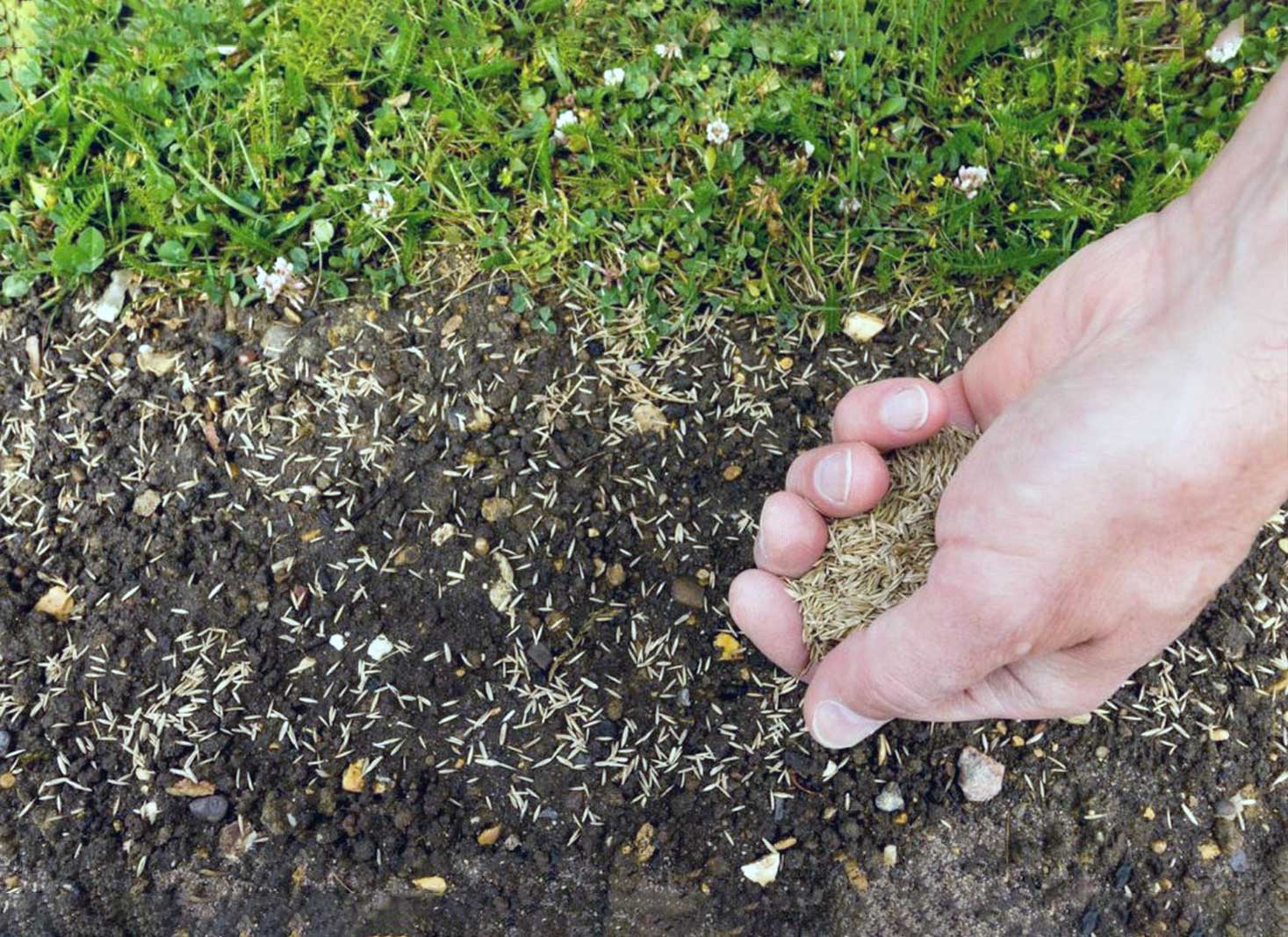
Several factors influence the time to plant grass seed, including climate, location, prevailing weather conditions, and soil preparation. Planting grass seed under ideal growing conditions reduces the risk of disease, poor germination, and seed failure, ensuring a lush and healthy lawn.
Let’s take a closer look at these factors and how they impact grass seed planting time.
Climate and Location
Climate and location play a significant role in determining the type of grass seed and the best time to seed. Cool-season grasses thrive in regions with colder temperatures, while warm-season grasses flourish in warmer climates.
The ideal planting time for each grass type depends on the specific climate and location, as local conditions such as temperature, rainfall, and sunlight directly impact grass growth and success.
Weather Conditions
Weather conditions, such as rain, wind, and temperature, should be considered when planting grass seed. Ideal weather conditions for planting grass seed are when the soil temperature is between 50-60°F (10-15.6°C) and the daytime temperature is between 60-75°F. It is recommended to plant just before rain, but not during harsh or heavy rainfall.
Planting warm-season grasses in cold, wet soil can lead to unsuccessful germination, rot, and disease. Cloudy weather can still support grass seed germination, provided that temperatures remain within the recommended range for the selected grass seed.
Soil Preparation
Preparing the lawn for planting grass seed involves leveling it, removing debris and rocks, testing soil for pH level and nutrient deficiencies, aerating, and fertilizing. Proper soil preparation ensures that the grass seeds have the ideal environment for germination and growth, leading to a thriving lawn.
Additionally, it is crucial to address any soil nutrient deficiencies or imbalances by adding amendments such as compost, peat, sulfur, or fertilizer, depending on the soil’s pH level. DIY soil testing kits can be found at home improvement stores, or you can consult your local garden center for assistance.
Optimal Planting Seasons for Different Grass Types
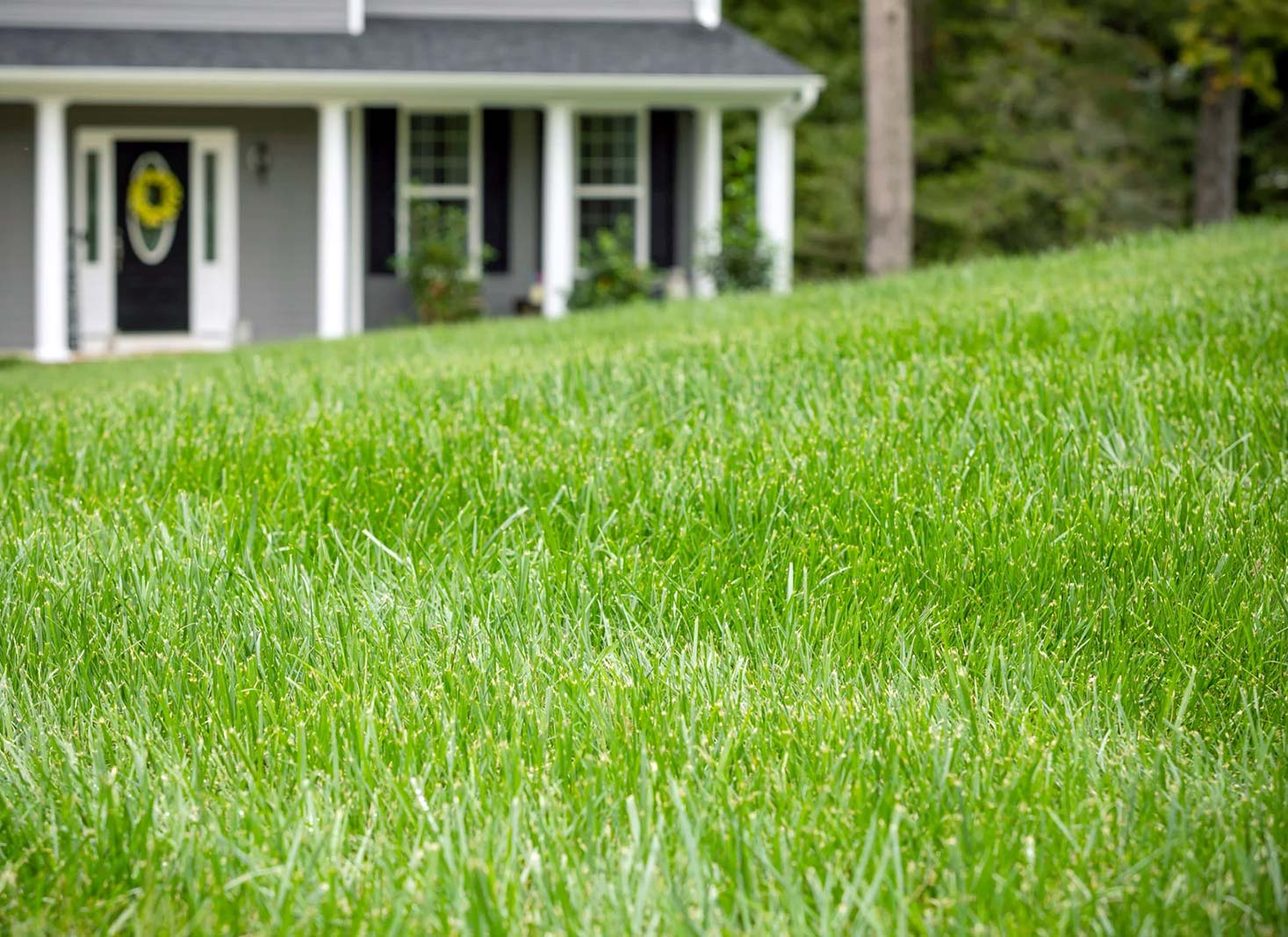
Now that we’ve discussed the factors that influence grass seed planting time, let’s explore the optimal planting seasons for various grass types, such as Bermuda grass, centipede grass, Kentucky bluegrass, and tall fescue.
Bermuda Grass
Bermuda grass is a warm-season grass that thrives in the southern region and should be planted in late spring or early summer. This timing provides Bermuda grass with the ideal soil and air temperatures for successful germination and growth.
Once planted, Bermuda grass requires regular watering, mowing at the appropriate height, and fertilization to ensure a healthy and attractive lawn. Patience is key, as it may take several weeks for the grass to establish itself and fill in any bare spots.
Centipede Grass
Centipede grass, another warm-season grass native to the southeastern United States, is low-maintenance, drought-tolerant, and requires less fertilizer than other grasses. Like Bermuda grass, the recommended planting time for centipede grass is May or June, approximately 3 to 4 weeks before its growing season begins.
To ensure successful germination and growth of centipede grass, it’s essential to provide adequate coverage and post-planting care and address any bare spots or weed/pest issues.
Kentucky Bluegrass
Kentucky bluegrass is a cool-season grass widely used for lawns due to its hardiness and ability to tolerate cold temperatures and heavy foot traffic. The recommended planting time for Kentucky bluegrass is late summer or early fall when soil temperatures range between 50-65°F (10-18°C).
Post-planting care for Kentucky bluegrass includes regular watering, fertilization, and mowing at the appropriate height to ensure a healthy, lush lawn.
Tall Fescue
Tall fescue is a cool-season grass renowned for its drought tolerance and ability to thrive in a variety of climates. The optimal planting time for tall fescue is late summer to early fall, similar to Kentucky bluegrass. This planting window allows tall fescue to establish itself before colder temperatures set in, ensuring a healthy and resilient lawn come spring.
With proper care and attention to detail, these grass types can provide a beautiful, lush lawn that will be the envy of the neighborhood.
Tips for Successful Grass Seed Germination and Growth
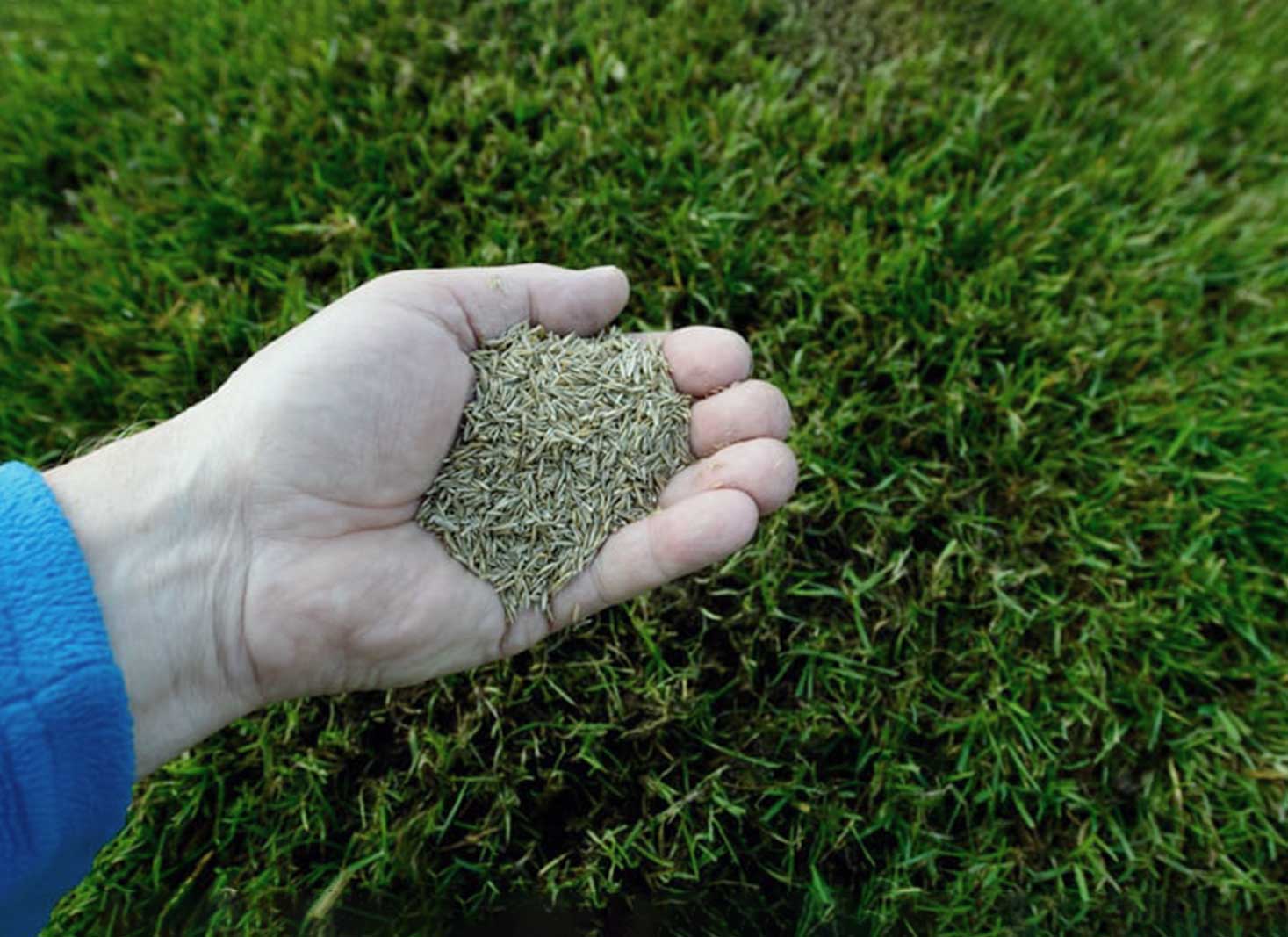
It will be useful to discuss some tips and tricks for successful grass seed germination and growth, ensuring a perfect lawn all year round.
To ensure successful germination, it’s important to prepare the soil properly. Loosen the soil to a depth of at least two inches and remove any weeds or debris. Make sure the soil is moist but not soggy, and add a layer of compost or fertilizer to provide the grass seed with the nutrients it needs.
Ensuring Good Coverage
To achieve good coverage and a healthy lawn, it’s vital to distribute grass seed evenly on top of loose, prepared soil. Using a spreader for larger areas ensures a uniform application while hand-seeding smaller areas can also be effective if done with care.
It’s also essential to cover the seeds with a thin layer of soil (about a quarter-inch) to protect them from the elements, birds, and other animals. Keeping the soil moist after planting is crucial for successful germination, so be sure to water the area regularly, especially during dry spells.
Post-Planting Care
After planting grass seed, it’s crucial to provide the new lawn with proper post-planting care to ensure healthy growth and establishment. This includes regular watering, especially during the first few weeks after planting.
Mowing the lawn at the appropriate height after 8 weeks or when the grass has reached an appropriate mowing height promotes healthy growth and prevents weeds from taking over. Additionally, it’s essential to avoid activities on the newly planted lawn area for at least 4 weeks after planting to give the grass seedlings time to establish their root systems.
How to Solve Common Grass Seed Planting Issues?
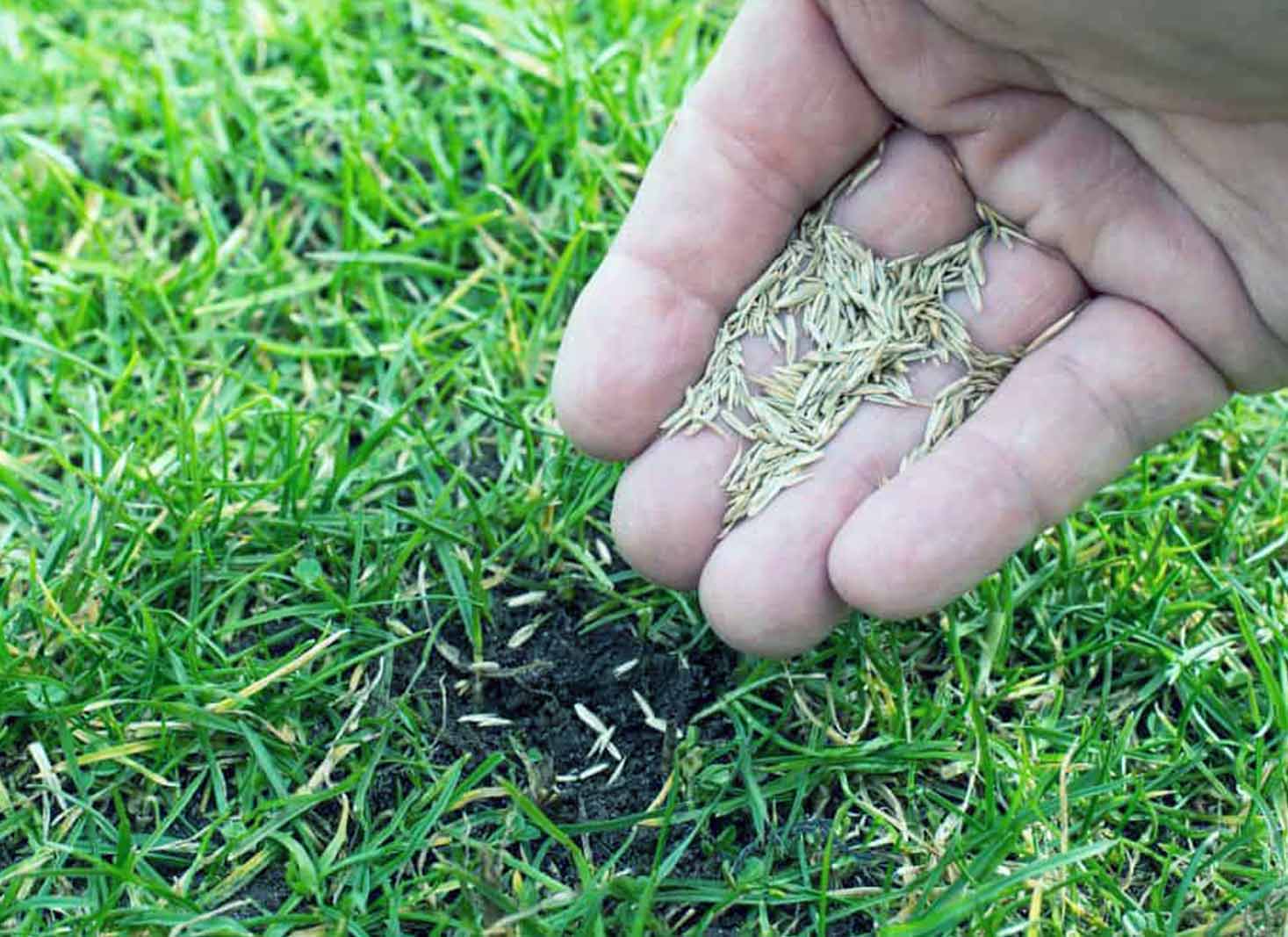
Even with the best planning and care, some common issues can arise when planting grass seeds, such as bare spots, weeds, and pests.
Fortunately, these issues can be addressed with proper troubleshooting techniques and preventative measures.
Dealing with Bare Spots
Bare spots in lawns can be caused by heavy foot traffic, drought, and insect infestations. To prepare these areas for overseeding, dig up the area, incorporate new topsoil, and level the ground using a rake. Sowing grass seed on the prepared area and keeping it moist will help the new grass establish itself and fill in the bare spots.
To prevent future bare patches, consider applying a pre-emergent herbicide combined with fertilizer to inhibit weed germination and promote healthy grass growth.
Combatting Weeds and Pests
Controlling weeds and pests in your lawn is crucial for maintaining a healthy and attractive appearance. Natural approaches, such as organic mulch, corn gluten meal, and intensive planting of vegetables, can help manage weeds and pests without the use of chemicals.
However, if chemical control is necessary, pre-emergent herbicides like Dimension or Pre-M and non-selective herbicides like glyphosate can be effective in controlling weeds and pests when planting grass seeds. Adequate watering and fertilization can also help reduce the risk of weed and pest infestations.
Summary
In summary, planting grass seed for a perfect lawn requires understanding grass types, optimal planting times, and environmental factors that impact your lawn’s success. With the proper attention to detail, such as ensuring good coverage, post-planting care, and troubleshooting common issues like bare spots, weeds, and pests, you can create a lush, healthy lawn that will make your neighbors green with envy. So grab your gardening gloves and let’s get started on creating your dream lawn!
FAQ's
For optimal results, it is best to plant grass seed in the late summer or early fall for cool-season grasses and in late spring or early summer for warm-season grasses.
Therefore, the best month to put down grass seed is typically in late summer or early fall.
Yes, you can throw grass seed on an existing lawn, but to ensure optimal results it is best to prepare the area beforehand by raking and loosening the soil. This will create a better surface for the seed to make contact with the soil, which will ultimately lead to successful germination.
To prepare your yard for grass seed, clear the area of debris, till the soil to a depth of 1-2 inches and 6 inches deep if you are removing roots or stones, add compost and topsoil, and core aerate if necessary.
Water the seed and then protect the soil and seed with a thin layer of mulch or straw. Finally, mow and control weeds as needed.
When watering grass seed, it is best to do so in the morning and late afternoon. This timing allows the water to soak into the soil before evaporating, conserves water, and keeps the grass from sitting in excess moisture overnight.
By avoiding night watering, you also decrease the chances of growing mold.
